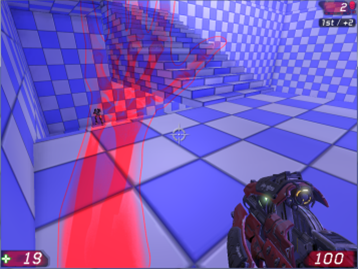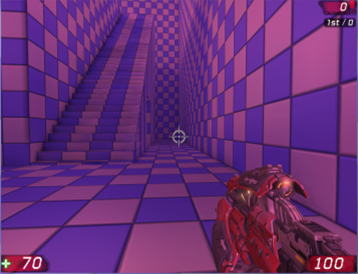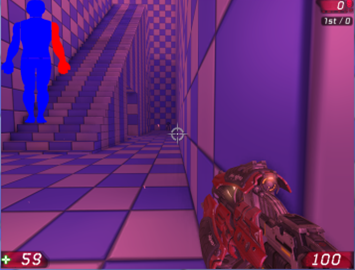« Back to Projects list

Ouch! Embodied First-Person Damage Indicators
We present an exploratory study on first-person shooting game damage indicators, comparing a red flash, a paper doll, and an x-ray mechanism, observing impact on gaming experience.
Please watch the video below to see how each damage indication was displayed to players.
Red flash: tilts the screen redder.

Paper doll: implements Red flash + a paper doll at top left, indicating which part of the body is hit

Xray: displays an x-ray image of the body part hit when under attack

Results
Injury Information was Appreciated.
Most participants commented that the injury information was useful, and that it also added to the game experience. Such comments were evenly split between the X-ray and paper doll conditions.
Realism.
There was an overall theme of participants talking about the indicators in terms of realism and how this made them feel. This was particularly common with the
X-ray indicator. Discussion of realism was often observed when participants were asked to compare one indicator to the others. In particular, all participants who preferred the red flash discussed it in terms of realism, that the red flash was most realistic. Some noted that, rather than being a good thing, increased realism hindered their game play experience, and that their choice of damage indicator may depend on their relationship with the character as one participant preferred unrealistic damage indicators for not wanting to care about the main character.
Dialog with the Character.
We analyzed participant response to the question of “what would your character have to say to you” in terms of comments that described
injuries to the character, as an indication of how much the player was thinking of the character’s health and wellbeing. We found that 3 participants discussed in such terms for red flash, 1 for paper doll, and 6 for X-ray. In all cases, participants only gave such feedback for one indicator, and said more generic things for others.
Lack of Paper Doll Salience.
There was a great deal of complaint on the visibility of the paper doll. Some did not even use it. Many of those who used it reported that the location was too in the periphery, and this impacted game play and immersion. Some suggested to change the location of the paper doll or to have it blink when damaged.
X-Ray Occlusions.
Even though the X-ray indicator was translucent, many people complained that it was visually obstructive, especially when the character was hit in
several places at the same time and when the templates overlapped, and that this impacted how they can play the game. Many provided suggestions for how to improve the indicator such as making it less flashy and colorful, or making it smaller. Some participants recommended a hybrid indicator of the paper doll and the X-ray.
Project Publications
Ouch! How Embodied Damage Indicators in First-Person Shooting Games Impact Gaming
James E. Young, Ibrahim Shahin, and Masayuki Nakane. "Ouch! How Embodied Damage Indicators in First-Person Shooting Games Impact Gaming Experience." Advances in Computer Entertainment. Springer International Publishing, 2013. 660-664.








